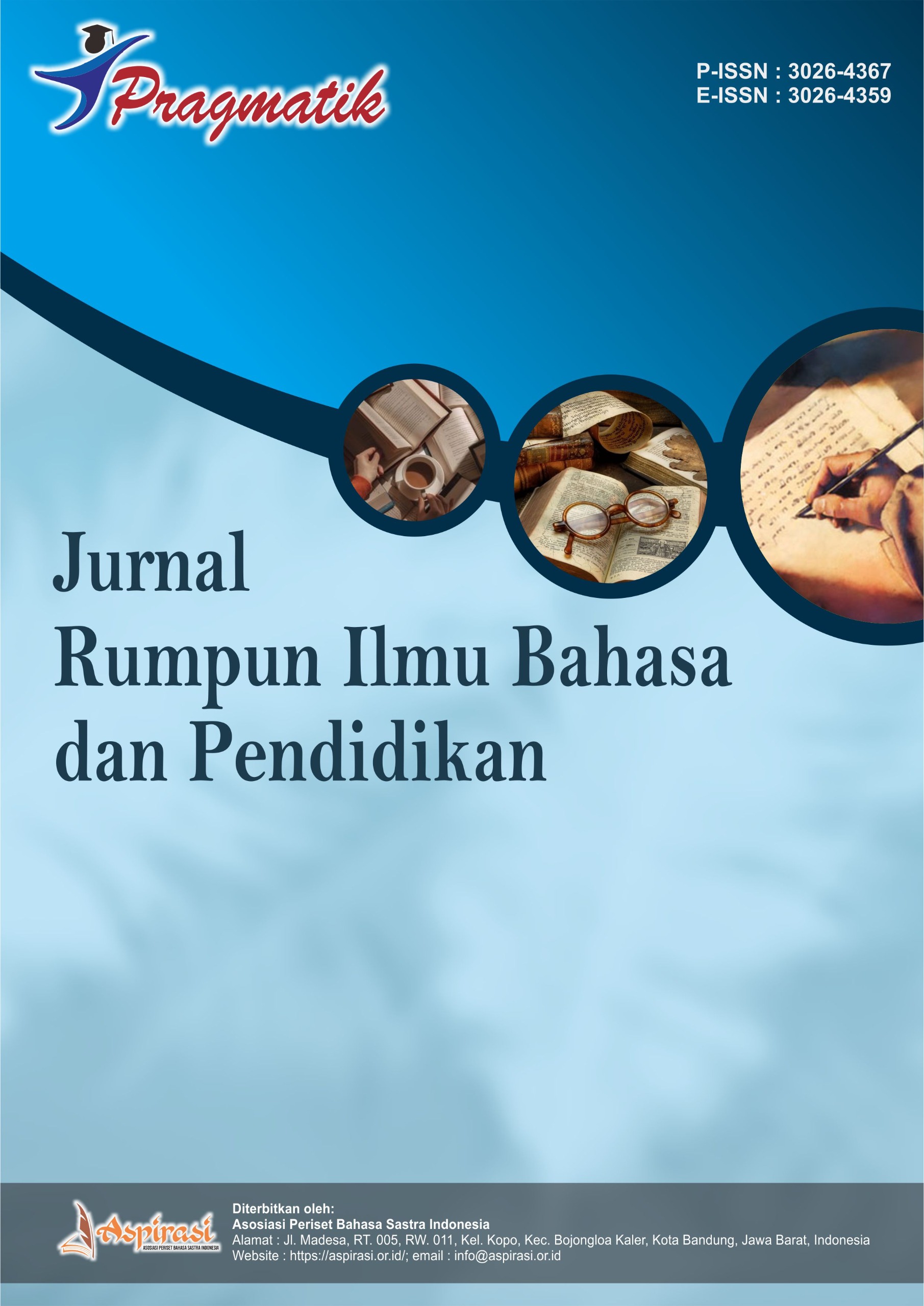Investigating Semantic Errors in English to Indonesian Translations : A Case Study of Deepl Translator
DOI:
https://doi.org/10.61132/pragmatik.v3i1.1356Keywords:
Deepl Translate, English to Indonesian Translation, Semantic Errors,Abstract
This study focuses on investigating semantic errors in English to Indonesian translation using DeepL Translate, with the aim of evaluating the extent of semantic accuracy of this translation tool. This study uses a qualitative approach with a case study design, where data is collected by observing translations during a conversation between a native English speaker and a native Indonesian speaker. Each translation was analysed using a qualitative descriptive method to identify semantic errors, which were classified into three categories: inappropriate word choice, loss of implicit meaning, and ambiguity of sentence structure. The results showed that out of 50 translated sentences, there were 15 semantic errors, with inappropriate word choice being the dominant category. The conclusion of this study is that while DeepL is capable of producing relatively good translations, its limitations in understanding semantic context remain a significant bottleneck. The study recommends further development of the automatic translation algorithm and training of users to use the technology critically and judiciously.
Downloads
References
Al-Sulaimaan, M. M. D., & Khoshaba, L. M. (2018). Translation revisited: A new approach. International Journal of English Literature and Social Sciences, 3(5), 761–767. https://doi.org/10.22161/ijels.3.5.11
Doherty, S. (2016). The impact of translation technologies on the process and product of translation. International Journal of Communication, 10(February), 947–969.
Fitria, T. N. (2021). A review of machine translation tools: The translation’s ability. Language Circle: Journal of Language and Literature, 16(1), 162–176. https://doi.org/10.15294/lc.v16i1.30961
Kamaluddin, M. I., Rasyid, M. W. K., Abqoriyyah, F. H., & Saehu, A. (2024). Accuracy analysis of DeepL: Breakthroughs in machine translation technology. Journal of English Education Forum (JEEF, 4(2), 122–126. https://doi.org/10.29303/jeef.v4i2.681
Koteva, G. (2017). Some problems of specialized translation at University of Chemical Technology and Metallurgy. Science, Engineering and Education, 4(1), 68–72. https://doi.org/10.59957/see.v4.i1.2019.10
Letsoela, P. M., & Matlosa, L. (2022). Lexical semantic errors in undergraduate students’ academic writing. FOSTER: Journal of English Language Teaching, 3(3), 172–184. https://doi.org/10.24256/foster-jelt.v3i3.101
Naveen, P., & Trojovský, P. (2024). Overview and challenges of machine translation for contextually appropriate translations. IScience, 27(10), 1–25. https://doi.org/10.1016/j.isci.2024.110878
Nurcahyani, F. D., & Adika, D. (2024). Translating the untranslatable: DeepL and ChatGPT on academic idioms. Linguistik Terjemahan Sastra (LINGTERSA). https://doi.org/10.32734/lingtersa.v5i2.15086
Rahman, U. U. K. (2019). Semantic translation error as a cause by Google Translate (A case of error translation on homonymous and polysemous words in Bahasa Indonesia).
Sawant, D. D. (2010). Translation: An effective way to cross-cultural communication in globalization.
Sofyan, R., & Rosa, R. N. (2021). Problems and strategies in translating legal texts. Humanus, 20(2), 221. https://doi.org/10.24036/humanus.v20i2.112233
Ugwu, C. N., & Eze, V. H. U. (2017). Qualitative research. Idosr Journal of Science and Technology, 3(1), 37–46.
Wongranu, P. (2017). Errors in translation made by English major students: A study on types and causes. Kasetsart Journal of Social Sciences, 38(2), 117–122. https://doi.org/10.1016/j.kjss.2016.11.003
Yuxiu, Y. (2024). Application of translation technology based on AI in translation teaching. Systems and Soft Computing, 6(January), 200072. https://doi.org/10.1016/j.sasc.2024.200072
Downloads
Published
How to Cite
Issue
Section
License
Copyright (c) 2025 Pragmatik : Jurnal Rumpun Ilmu Bahasa dan Pendidikan

This work is licensed under a Creative Commons Attribution-ShareAlike 4.0 International License.





